Burgos in 1 day
Hello everyone!
Today I'll be talking about the city of Burgos, in Castilla and León. It wasn't too long ago that I spent the day there, and I was able to visit loads of places, which I'm going to talk to you about now.
I didn't know the city and I honestly didn't expect it to be either so pretty or so big, so it surprised me and I liked it in equal parts.
How to get there?
This city is in the North of Spain. It's a very big and well known city, so it's not difficult to get here. There are a lot of buses and trains that going to nearly every other part of Spain.
In my case, I went by car from Logroño. The journey takes a little over an hour and it goes along the Camino del Santiago route, so the road is full of pilgrims.
On the outskirts
Although you can do this in the opposite order, if you don't have time, don't do it. Before I properly went to the centre of the city, I decided to visit some of the places that were worth seeing, but these are further away.
Las Huelgas
Las Huelgas is a convent which is in Burgos, but a little bit further outside the centre. As we went by car, we parked there first of all before we went into the city properly.
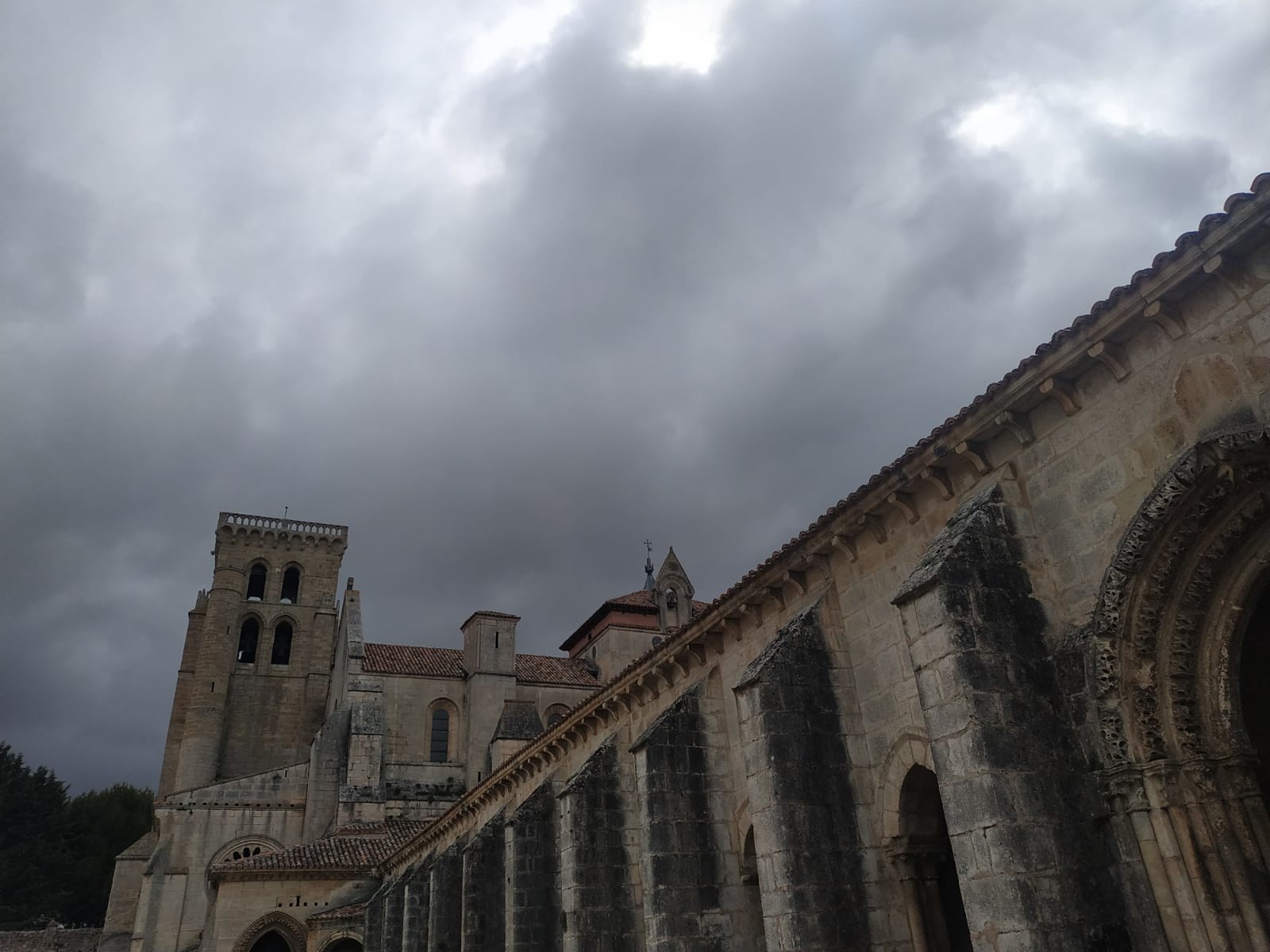
It's a guided visit and starts whenever. However, you can't buy tickets beforehand so you have to buy them directly from there. When we arrived we had to wait a little bit over 20 minutes, which realistically isn't a lot, although the worst part was there's nothing to do over there.
The visit takes an hour more or less, but what they tell you is very interesting and I liked it quite a lot. The bad thing is that you can't take photos inside so I don't have much to show you.
It's an enclosed convent where a little under 20 nuns live today. The church inside is enormous, but it's very strange as it's full of walls. As it was an enclosed convent they closed all the naves of the church, leaving a zone so the town could pray and the other part was where the nuns could pray without having to see each other. But they were able to have mass at the same time.
The church has its own huge heritage. It's full of paintings, canvas', sculptures and also the tombs of distinguished people. However, it's very sad because when the French arrived in Spain, they ransacked all these tombs and took everything of value they could find. One tomb managed to be saved, as it was almost hidden behind another, or they just didn't see it, or they found it very hard to get ti, The case is that this tomb is the only one that has been conserved just as it was when it was made.

Inside there's also a cloister that you can visit. When it was built, the reigning man spent a huge part of his time in Toledo and later it has many mudejar influences. All of the roofs of the convent were decorated with geometric patterns from the culture of the time. It is interesting at least, if you think about it, to find these kinds of drawings in a Christian convent, but it was the culture of the time.
Even so, nearly the whole ceiling has disappeared and only a few of the drawings that were there remain today.
Also, a chapel right at the back caught my attention, right next to the gardens of the convent. It's a small chapel with only one wooden statue of a saint. It's very interesting and actually quite funny as it turns out that, at the time, so become a gentleman, you had to be named one by the king. But, who called the king a gentleman?
It turns out that as the only person above the King at the time was God, so they built a statue of a saint with a sword in one of his hands which was jointed. So during this era, the put someone behind the statue and moved his arm and made the King a knight. Even the sword was made of wood so, if by some sort of accident it fell, no one would be able to name a new king. I really found this funny, and I hadn't expected anything from this place, and it seemed a little bit ridiculous. But further beyond this, the chapel also had an incredible ceiling which was also in a mudejar style of wood.
La cartuja
The Cartuja is an enclosed monastery once again. It's totally separate from the city. You'd need a car to get there, although it's not that far.
It's a little way up a mountain. At the entrance there's a carpark and the enclosed area that you can't visit. The only thing you can go inside is the church.
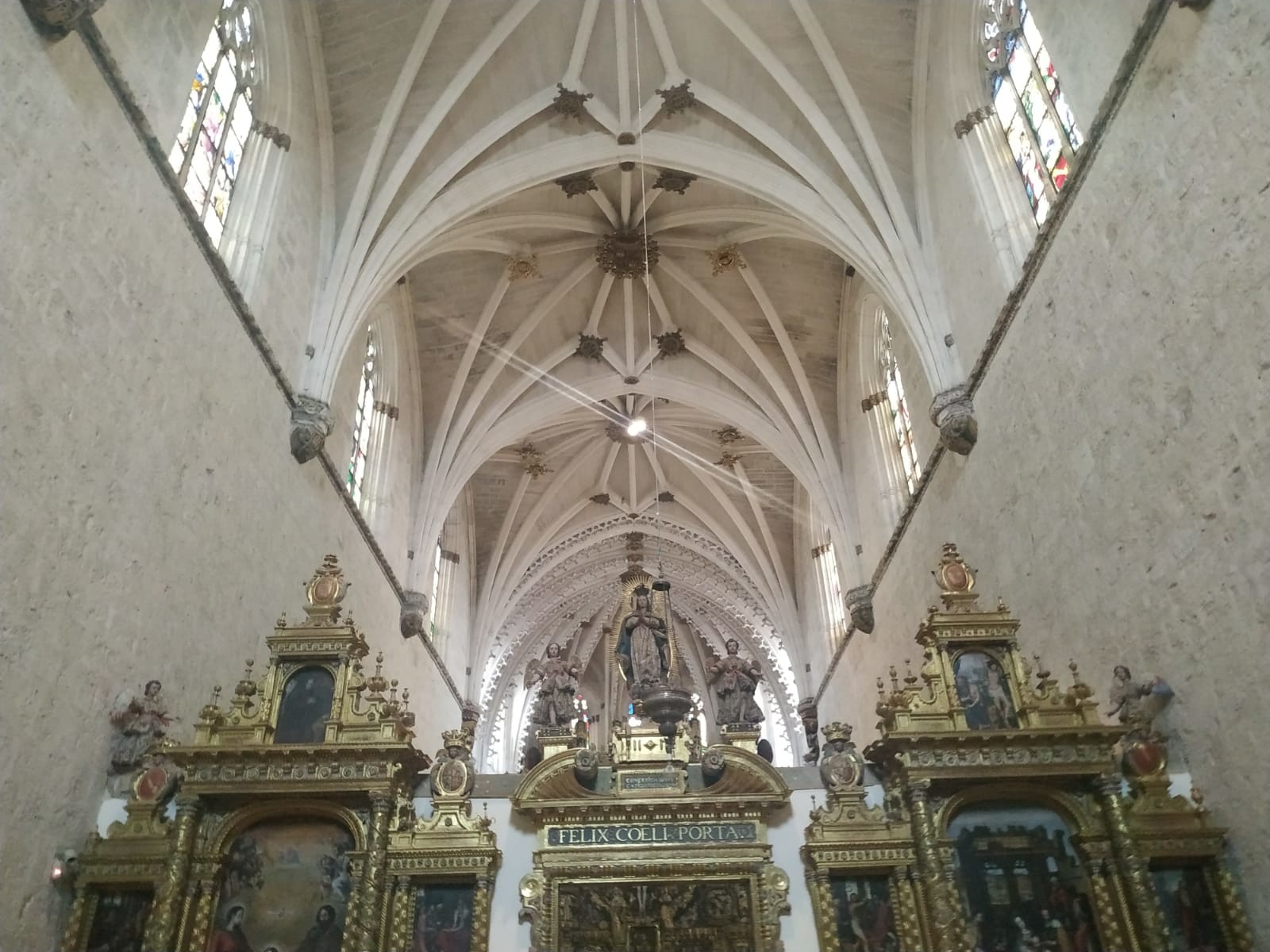
The church is very dark, but you can tell how much wealth there is there, as there is an enormous altarpiece and loads of gold decorations. On the altar there are also two marble tombs that reminded me of the Catholic Monarchs that are in Granada. They were spectacular and so big that I couldn't even see the figures that were on top very well, so they had to put a picture of them on one of the sides so people could appreciate them. The tombs belonged to Juan II and Isabel of Portugal.
Once again, it's incredible to think about the amount of heritage that the church has. From there you pass a side room that is full of objects and paintings. And there is also a painting by Sorolla. It's at least interesting to think about all the money they had here. Additionally, entry is free, but they do ask for a donation.
Burgos
After visiting this two places, I went straight to the city.
I entered the city by passing through an enormous door, the Arch of Santa Maria, and it's very well known. It's very pretty. It's like a castle and it's full of sculptures. I know that there is a museum inside that you can enter as well, but we didn't go into that one.
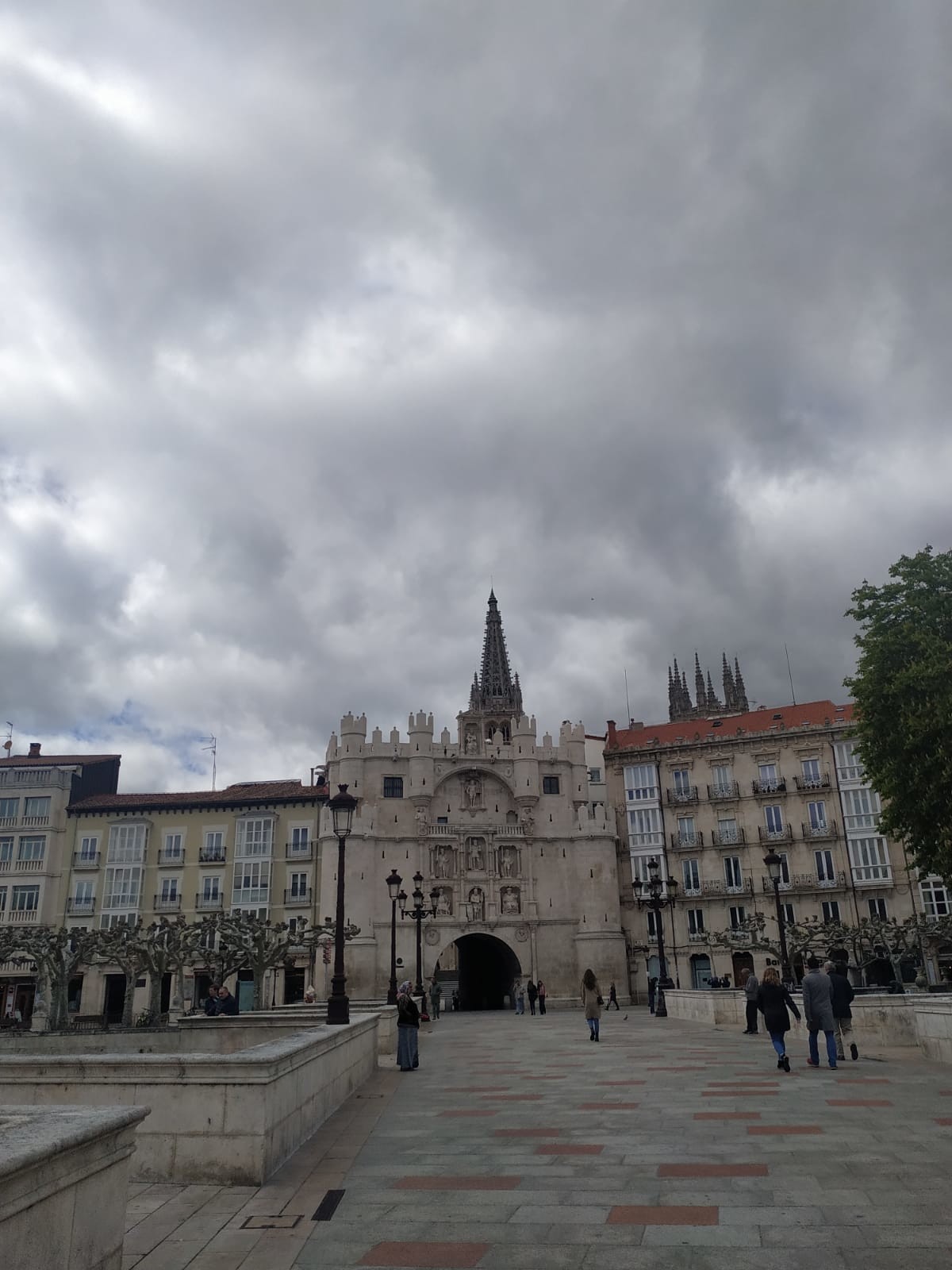
Just before that is the river Duero and a walkway that is full of people during the afternoon. There are so many trees, but they had just trimmed them so you could see everything. In the summer they should be completely green. Also it's very interesting that as they are right next to one another, their branches have started to intertwine. This is known by the name Paseo del Espolón. If you keep walking down this paseo, you'll arrive at the main street that has a statue of Cid Campeador on it.
As soon as you go through the door you will be directly in front of the cathedral.
It's enormous and you can only see the side at this point, but it's very impressive. Also, it's the same colour as the majority of buildings around it. Also, there is a very pretty arrangement on the floor. It stands out, but creates some beautiful views at the same time.

You can enter from this side, by climbing some stairs.
To visit the most important places, there is a blue bracelet that allows you to enter the cathedral and three other churches. It costs €8. At first this could seem expensive, but just for the cathedral it costs €7, so it easily saves you money.
They gave us this bracelet directly at the cathedral. The visit is free and they also give you an audioguide so that everyone can hear the history of its past. I have to say that the audio is very interesting, but you'll spend nearly an hour listening to it. Only use the whole thing if you have sufficient time for it. As I didn't have enough time I went to listen to the audios for the other rooms that caught more of my attention.
The cathedral is enormous and beautiful inside. As soon as you enter, you'll see a dome in the centre, which joins the two arms of the cross together which is spectacular. Yes, I like to exaggerate anyway, but I love art history and this really impressed me. In general all the vaults and domes are beautiful, despite the fact that some of the original stained glass windows aren't the originals.
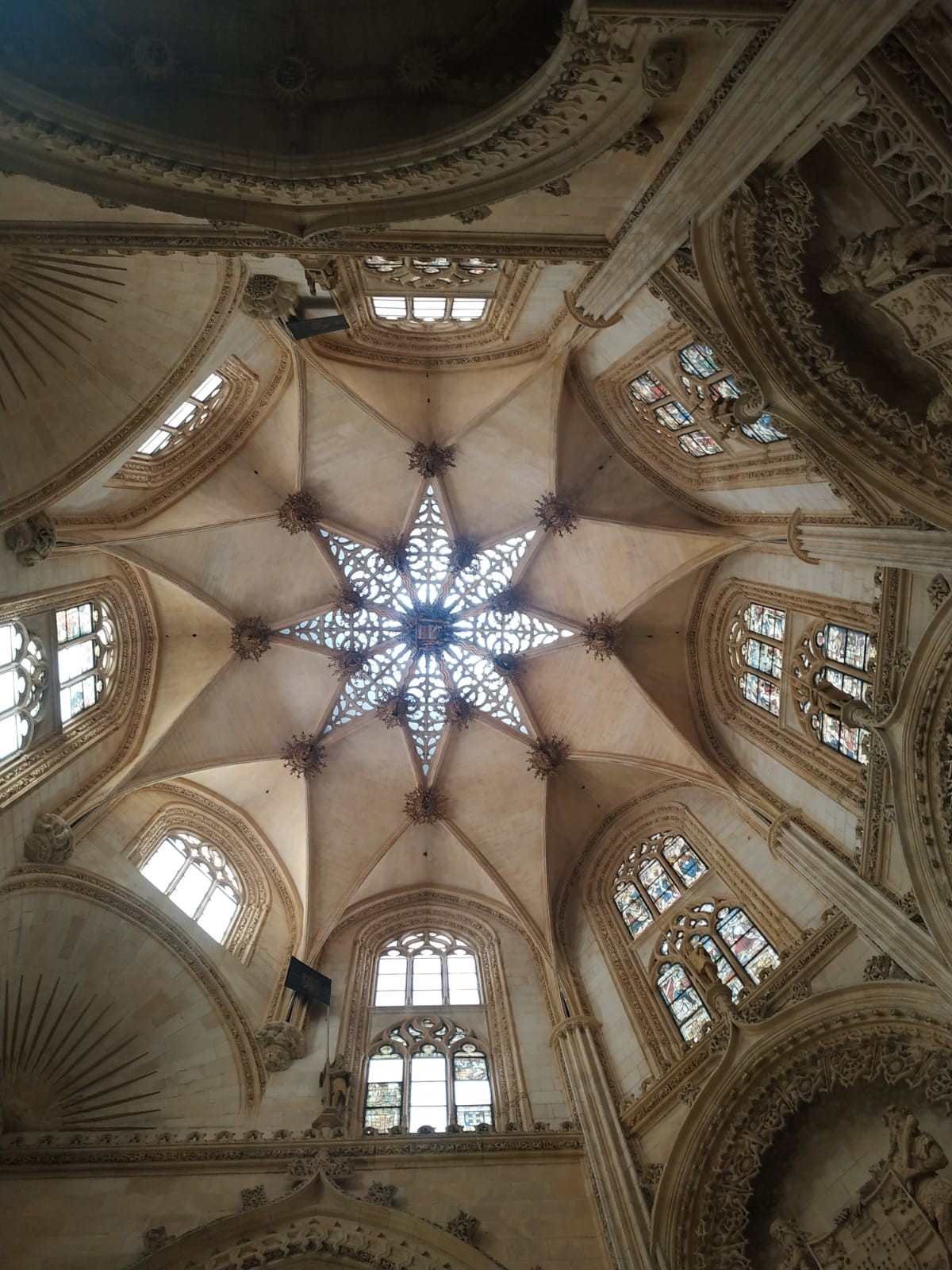
The main altar is incredible as well, with a golden altarpiece. This was one of the audios that I listened to and there are so many historical religious moments that are represented in each one of the paintings and sculptures that appear. There are up to 25 different scenes, aside from the adoring figures of Christ on the highest altar.
Behind the altar there were also some chapels that were very pretty.
Also, just out of curiosity, I'll tell you why some churches have these chapels behind the altar and others don't. Those that have these chapels, and this corridor between them (which is called the ambulatory) have them because they belong to the Camino de Santiago, the pilgrimage. Traditionally these churches were for the town or city people, and they didn't have the touristic interest that they have now. So when the pilgrimage to Santiago de Compostela began, and all the churches and cathedrals that were being built around the route had started to incorporate this ambulatory for the pilgrims so that they could come in and admire the church without interrupting mass that they celebrate in the central nave.
It's only because of this that we know that Burgos belongs to the Camingo de Santiago/ But it's easy to find out because on the way to Burgos you'll see all the pilgrims on the road and they are all carrying the shell of Santiago, the symbol of the pilgrimage.
When you leave the cathedral, you enter a sort of cloister or interior patio that also reveals even more rooms. One of them caught my attention because of its decoration. It was an excessively ornate room in comparison to the ones before, and with lots of different colours, not like you'd see in the rest of the cathedral It was of a much more modern style.
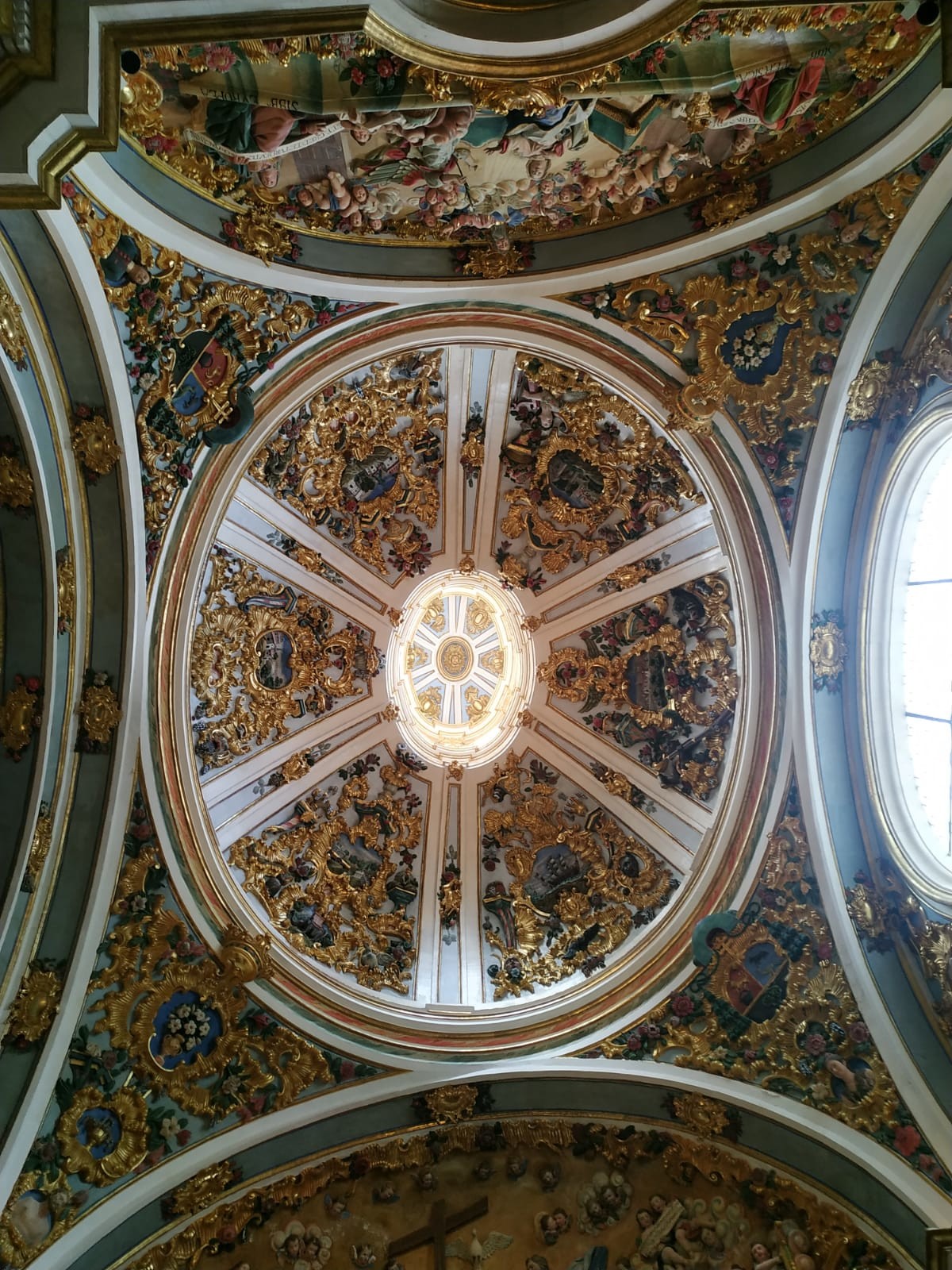
There is also a very interesting room as all the walls were decorated with paintings of archbishops/ It completely filled the space. There was only space left for three more paintings, that were already prepared but without linen. But, it's curious how they made the most of this space and how the whole aesthetic is lost here.

Finally, there was a modern room with a seasonal Gaudi exposition. It's a mobile exposition, and I had already seen it a year ago in León, so we didn't give it a lot of our attention.
After all of this, there's not much more of the cathedral that's worth mentioning, you simply have to visit.
The next church we visited is very close to the cathedral, near to its main facade, called the Church of San Nicolas de Bari.
It's very, very small, but here the altar doesn't have anything nearly as impressive as the golden ones from before. This altarpiece was made of stone or ivory, but I don't actually know. It's completely white and there are polychromatic figures, however, there are so many of the figures that they're almost stuck to one another. It's almost impossible to distinguish them unless you get really, really close.
The church also has an external room that is full of tapestries, painting, sculptures, heirlooms... once again, part of the Church's heritage.
This one is fairly small in comparison with the cathedral. You can listen to the audioguide in here and it won't take much more than 40 minutes to walk around it (a was there for exactly an hour).
After visiting these two places, which were among the churches you could visit with the bracelet, we still had two more to see.
One of them was the Parroquia de San Estaban. Inside the chruch is the Museum of Altarpieces. It's really small and full of altars in every room. It's the only church that I've ever seen that doesn't give mass, so there aren't any chairs or anything. There are only altars, some tombs and some sculptures. You can also climb up to the choir stalls where there are more sculptures. (It's not permitted to take photos).
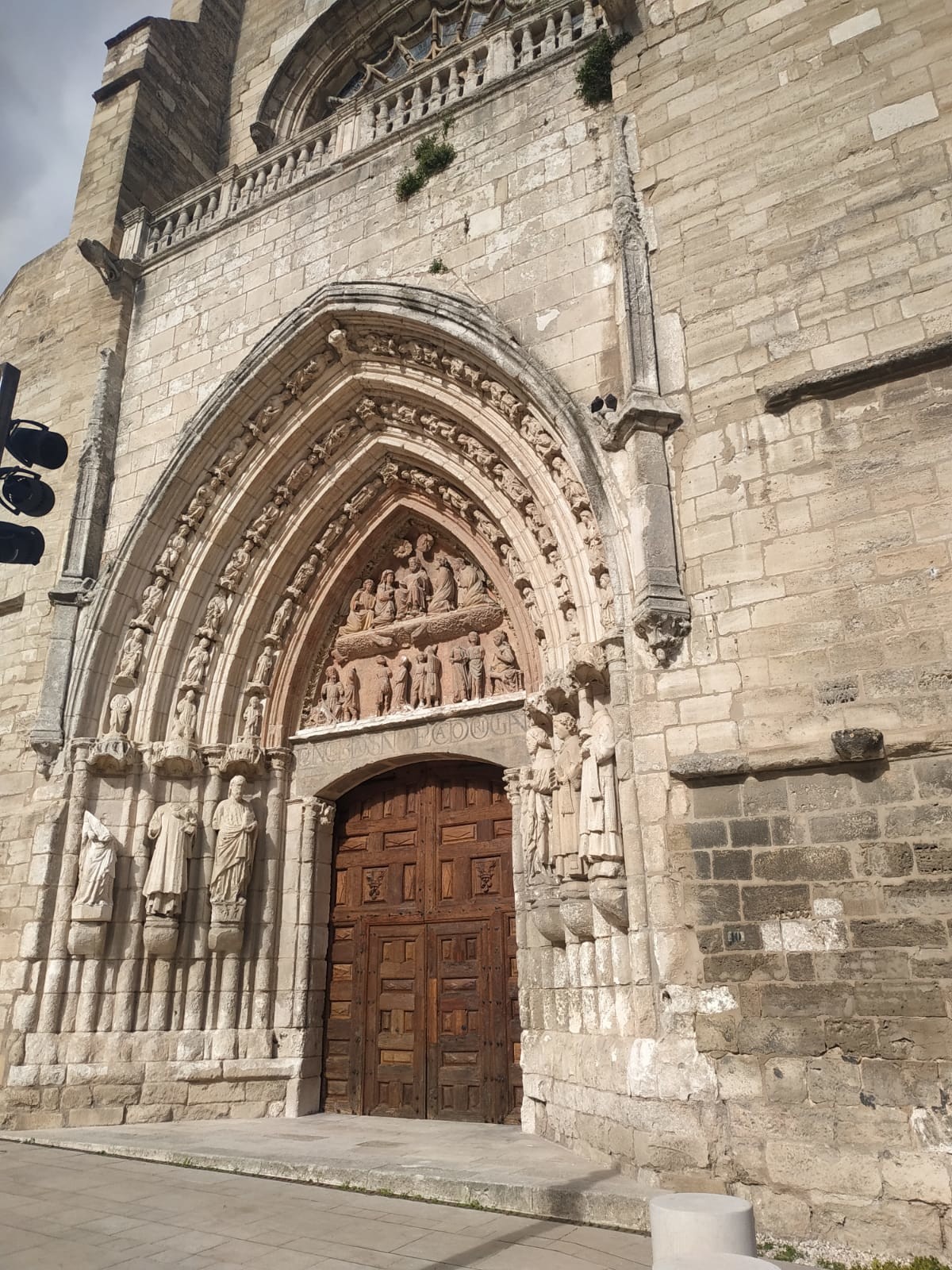
Finally, we visited the Church of San Gil. This one is a little bit further away than the previous ones, although it's still in the old town.
We went there because we could go in thanks to the tourist bracelet and we thought it would be important. However, nothing there caught my attention. Maybe it was because of the amount of time we'd spent visiting the city and we'd seen too much.
It was a pretty church, yes, but not as special as the previous ones. To me, it didn't seem like it should be one of the four main sites that you should visit in Burgos.
After this, and as we still had a long journey back home, we simply went to see the Plaza Mayor. It's a huge and enormous plaza, with porticos. It's interesting that we entered the plaza through the town hall and this had walls with marks from where the water rose to during the two floods Burgos has in the 9th and 10th century.
The plaza is very colourful, rectangular and on the balcony of the town hall it has a sign for the anniversary of the cathedral, which is without a doubt the most famous thing in Burgos.

After walking around the plaza for a bit we went back to the car. I know that there are still a lot of things we need to see, Burgos has a lot to offer, and even more than that! But, we had a very short amount of time and this is all we could see. Without a doubt, I'll go back. And soon, I hope.
Thanks for reading!
Photo gallery
Content available in other languages
- Español: Burgos en un día
Want to have your own Erasmus blog?
If you are experiencing living abroad, you're an avid traveller or want to promote the city where you live... create your own blog and share your adventures!
I want to create my Erasmus blog! →





























Comments (0 comments)